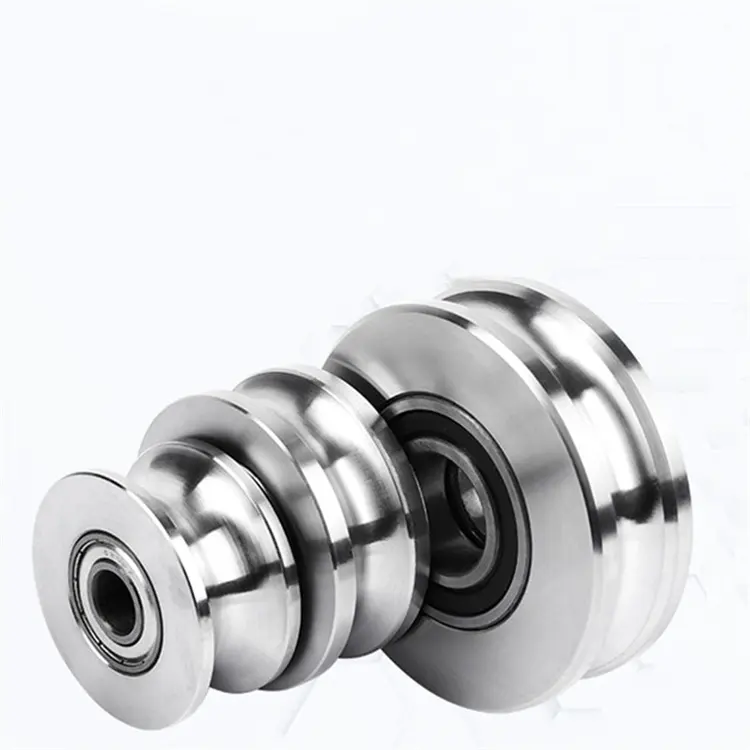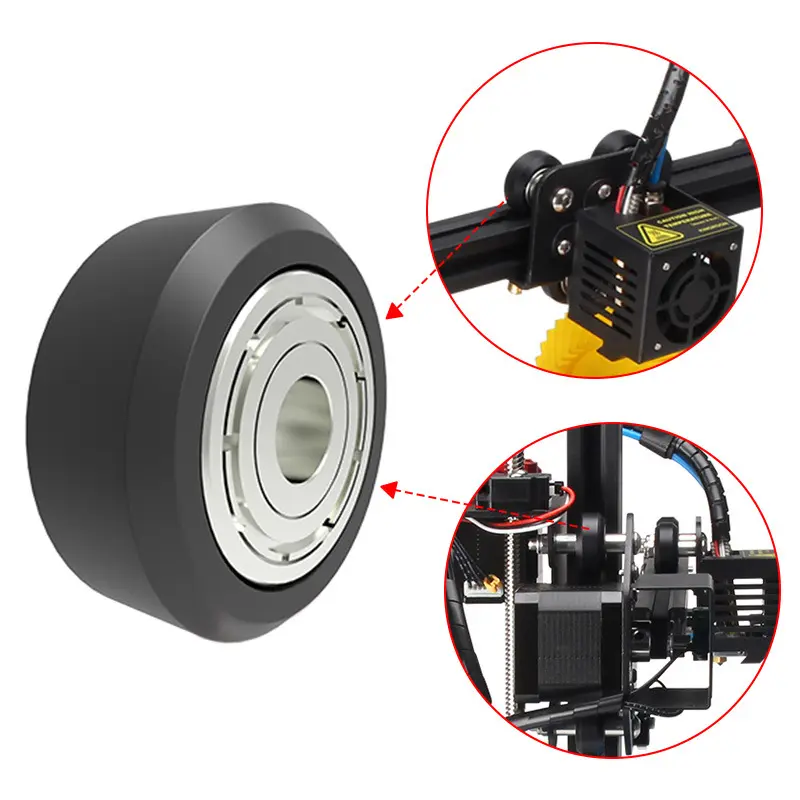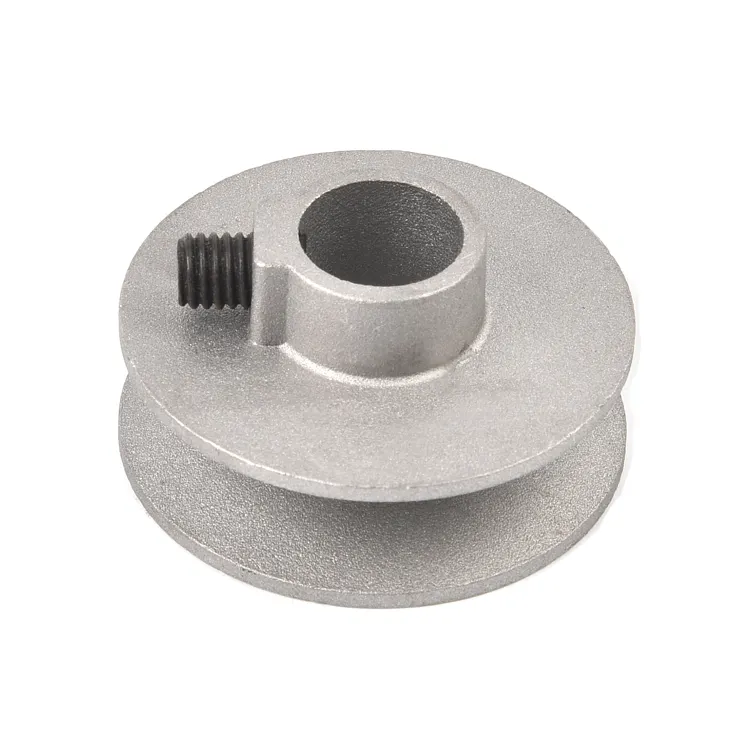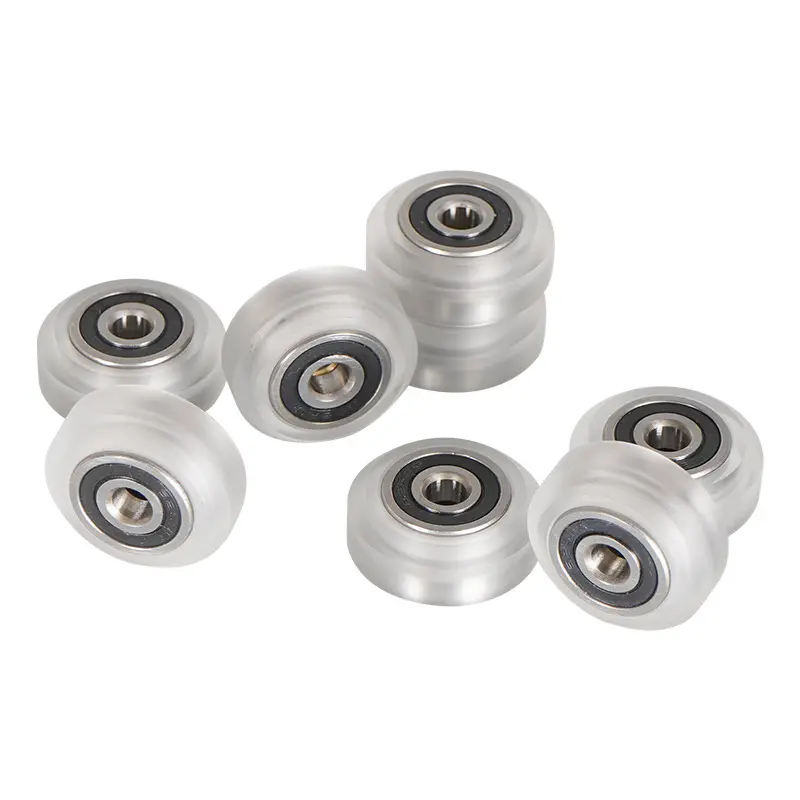Product Description
Product Description
Hot sale 20KN Rock Climbing Pulley Rope Belt Lifting Sling Accessories Pulley
Equipment Outdoor Pulley
| Product Name: | Small Single Pulley |
| Product material: | 7075 aluminum magnesium alloy |
| Product color: | Customizable |
| Product origin: | ZheJiang |
| Net weight of product: | 90g |
| Breaking force: | 20KN |
| Scope of application: | Short distance crossing, indoor training, freight transportation, etc. |
Certifications
Packaging & Shipping
Packing: 1 pc per opp bag, 10pcs per master carton, Carton size: 75x40x35cm, G.W: 28.00kg
Payment:T/T 30% in advance, 70% before shipment,L/C , Western Union
Company Profile
ZheJiang CHINAMFG Import and Export Co., Ltd. was established in 2014. It is a company specializing in the production of safety belts and safety ropes. It is located in the hometown of rope nets – Lizhuang, ZheJiang . In order to ensure complete customer satisfaction, the professional customer service team provides 24/7 service all year round and has won numerous praises from customers. The products sell well in all provinces and cities across the country, and are exported to customers in the United States, Britain, France, Malaysia and other countries and regions. We also welcome OEM and ODM. We will provide you with the most professional service.
FAQ
1 . Q : Are you a factory or trading company ?
A : We are a genuine manufacturer .
2 . Q : Where is your factory located ? How can I visit there ?
A : Our factory is located in HangZhou City , ZheJiang Province , China , You can travel to the HangZhou Airport by airplane. We will pick you up from there . All our clients , from domestic or abroad , are warmly welcome to visit us !
3 . Q : What makes you different fromothers ?
A : Our excellent quality Products and Service .
B : Our fast lead time . For Normal orders , we will promise to produce within 7 – 2 0 days . As a factory , we can ensure the delivery time according to the formal contract .
4 . Q : What is the term of payment ?
A : T / T, LC
/* January 22, 2571 19:08:37 */!function(){function s(e,r){var a,o={};try{e&&e.split(“,”).forEach(function(e,t){e&&(a=e.match(/(.*?):(.*)$/))&&1
| Type: | Pulley |
|---|---|
| Season: | Winter, Autumn, Summer, Spring |
| Application: | Outdoor, Indoor |
| Samples: |
US$ 10/Piece
1 Piece(Min.Order) | Order Sample |
|---|
| Customization: |
Available
| Customized Request |
|---|
.shipping-cost-tm .tm-status-off{background: none;padding:0;color: #1470cc}
|
Shipping Cost:
Estimated freight per unit. |
about shipping cost and estimated delivery time. |
|---|
| Payment Method: |
|
|---|---|
|
Initial Payment Full Payment |
| Currency: | US$ |
|---|
| Return&refunds: | You can apply for a refund up to 30 days after receipt of the products. |
|---|

How do fixed pulleys contribute to the precision and control of lifting and lowering operations?
Fixed pulleys play a crucial role in enhancing the precision and control of lifting and lowering operations. By incorporating fixed pulleys into a system, several benefits can be achieved, allowing for more precise and controlled movements. Here are ways in which fixed pulleys contribute to the precision and control of lifting and lowering operations:
- Force Distribution: Fixed pulleys help distribute the applied force more evenly throughout the system. By introducing additional pulleys, the load can be divided into multiple segments, reducing the strain on individual components. This even distribution of force minimizes the risk of overload on specific parts of the system, ensuring better control and preventing premature equipment failure.
- Reduction of Friction: Fixed pulleys can reduce friction during lifting and lowering operations. The use of pulleys with low-friction materials and designs, such as ball bearings or bushings, helps to minimize resistance and improve the overall efficiency of the system. Reduced friction allows for smoother movements, enabling greater precision and control over the lifting and lowering process.
- Directional Control: Fixed pulleys enable precise directional control of the load. By changing the direction of the rope or cable through the fixed pulleys, operators can guide the load along a desired path. This directional control is particularly useful when navigating tight spaces, avoiding obstacles, or aligning the load with precision. It allows for more accurate positioning and prevents unintended movements or shifts during the lifting or lowering operation.
- Load Stabilization: Fixed pulleys contribute to load stabilization and minimize swinging or oscillation of the load. The configuration of fixed pulleys can help dampen and control the movement of the load, reducing unwanted swinging or swaying. This is especially important when handling delicate or sensitive items that require minimal disturbance or precise placement.
- Gradual Speed Control: Fixed pulleys allow for gradual speed control during lifting and lowering operations. By adjusting the tension on the rope or cable, operators can regulate the speed at which the load is raised or lowered. The mechanical advantage provided by fixed pulleys facilitates smooth and controlled movements, preventing sudden or jerky motions that could potentially damage the load or compromise safety.
- Incremental Positioning: Fixed pulleys enable incremental positioning of the load. By adjusting the tension on the rope or cable incrementally, operators can achieve precise positioning of the load at various heights or locations. This level of control is especially valuable in tasks that require accurate alignment or when working in confined spaces where fine adjustments are necessary.
- Operator Effort: Fixed pulleys reduce the amount of physical effort required from the operator during lifting and lowering operations. The mechanical advantage provided by fixed pulleys helps multiply the force applied by the operator, making it easier to control heavy loads or objects. This reduces operator fatigue, improves safety, and allows for more precise and controlled movements.
By leveraging the advantages offered by fixed pulleys, lifting and lowering operations can be performed with greater precision, improved control, and enhanced safety. The integration of fixed pulleys into lifting systems provides operators with the necessary tools to achieve accurate positioning, gradual speed control, load stabilization, and efficient force distribution, ultimately contributing to successful and controlled lifting and lowering operations.

How do fixed pulleys contribute to the efficiency and safety of lifting operations?
Fixed pulleys play a crucial role in enhancing the efficiency and safety of lifting operations. Here’s a detailed explanation of how fixed pulleys contribute to these aspects:
- Mechanical Advantage: Fixed pulleys provide a mechanical advantage, allowing users to lift heavy loads with reduced effort. By redirecting the force applied to the rope or cable, fixed pulleys multiply the input force, making it easier to lift or move heavy objects. This mechanical advantage increases the efficiency of lifting operations by minimizing the physical exertion required and increasing the overall productivity of the task.
- Load Distribution: Fixed pulleys help distribute the load evenly across the lifting system. When multiple fixed pulleys are used in combination, the load is divided proportionally among them, reducing the strain on individual components. This load distribution not only improves the efficiency of the lifting operation but also enhances the safety by preventing overloading of any particular component, minimizing the risk of equipment failure or accidents.
- Control and Precision: Fixed pulleys offer better control and precision during lifting operations. The pulley system allows operators to apply force at a convenient location, while the load is being lifted or moved at a different position. This separation between the input force and the load enables operators to have better visibility and control over the lifting process, enhancing safety and minimizing the chances of accidental damage or injury.
- Force Direction: Fixed pulleys change the direction of force, allowing users to lift or move loads vertically, horizontally, or at different angles. This versatility in force direction contributes to the efficiency of lifting operations by accommodating various spatial requirements. It enables objects to be lifted or moved in the desired direction, optimizing workflow and reducing the need for manual repositioning, thereby saving time and effort.
- Reduced Risk of Back Injuries: By utilizing fixed pulleys, lifting operations can significantly reduce the risk of back injuries. The mechanical advantage provided by the pulley system minimizes the amount of force required to lift heavy objects manually. This reduces the strain on the operator’s back and musculoskeletal system, mitigating the risk of overexertion or back-related injuries, and promoting a safer working environment.
- Safe Load Handling: Fixed pulleys enable safe and controlled handling of loads. The mechanical advantage and improved control offered by the pulley system allow operators to lift or lower loads at a controlled speed, reducing the likelihood of sudden shifts or drops. This ensures that the load remains stable during the lifting operation, minimizing the risk of accidents, collisions, or damage to the load or surrounding infrastructure.
In summary, fixed pulleys contribute to the efficiency and safety of lifting operations through the provision of mechanical advantage, even load distribution, enhanced control and precision, versatile force direction, reduced risk of back injuries, and safe load handling. By utilizing fixed pulleys, lifting tasks can be performed with greater ease, productivity, and safety, improving overall operational efficiency and minimizing the potential for workplace accidents or injuries.

What is a fixed pulley, and how is it used in mechanical systems?
A fixed pulley is a type of pulley that is stationary and does not move. It consists of a grooved wheel mounted on a fixed axle or support. Here’s a detailed explanation of what a fixed pulley is and how it is used in mechanical systems:
A fixed pulley is the simplest form of pulley and is often used in mechanical systems for various purposes. Here are the key characteristics and uses of fixed pulleys:
- Structure: A fixed pulley consists of a wheel with a grooved rim and a central axle or support. The wheel is designed to rotate freely around the axle or support. The groove in the rim accommodates a rope, cable, or belt, allowing it to move along the circumference of the wheel.
- Function: The primary function of a fixed pulley is to change the direction of a force applied to the rope or cable. When a force is applied downward on one side of the rope, the fixed pulley redirects the force upward on the other side. It does not provide any mechanical advantage or change the magnitude of the force.
- Usage: Fixed pulleys are commonly used in mechanical systems for various purposes, including:
- Lifting and lowering loads: Fixed pulleys are often used in lifting systems to change the direction of the force applied to the load. For example, in a block and tackle arrangement, multiple fixed pulleys can be combined with movable pulleys to create a mechanical advantage and facilitate the lifting of heavy loads.
- Tensioning and guiding: Fixed pulleys are used to maintain tension in belts or ropes and guide them along a desired path. They help prevent slack or excessive movement in the system and ensure smooth operation.
- Transferring power: Fixed pulleys are used in power transmission systems, such as in engines or machinery. They guide and redirect belts or ropes to transfer rotational motion or power from one component to another.
- Creating force multipliers: While a single fixed pulley does not provide a mechanical advantage, it can be combined with other pulleys, such as movable pulleys or compound pulley systems, to create force multipliers and increase the mechanical advantage in lifting or pulling applications.
- Advantages: Fixed pulleys offer several advantages in mechanical systems, including their simplicity, ease of installation, and low maintenance requirements. They are often cost-effective solutions for changing the direction of forces or guiding ropes or belts in various applications.
- Limitations: Fixed pulleys have limitations in terms of not providing any mechanical advantage to the force applied. They do not reduce the effort required to lift or move a load. To achieve a mechanical advantage, fixed pulleys need to be combined with other pulleys in a system.
In summary, a fixed pulley is a stationary pulley that changes the direction of a force applied to a rope or cable. It is used in mechanical systems for lifting, tensioning, power transmission, and force multiplication purposes. Fixed pulleys offer simplicity, easy installation, and low maintenance, but they do not provide a mechanical advantage on their own. To achieve a mechanical advantage, fixed pulleys can be combined with other pulleys in various configurations.


editor by CX
2024-04-24







